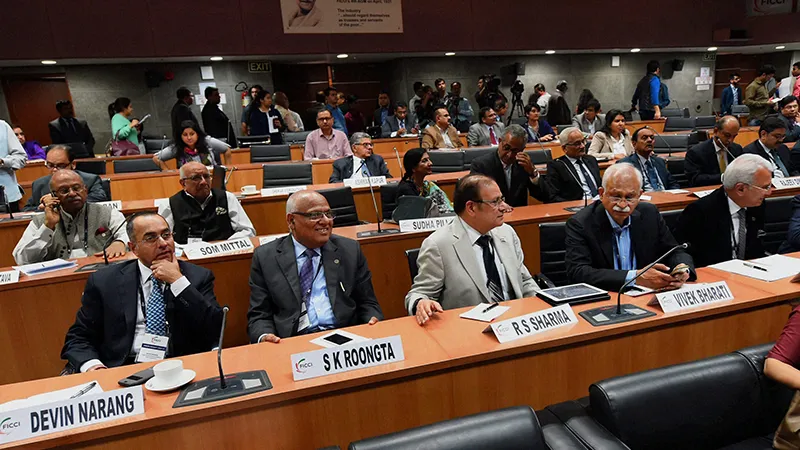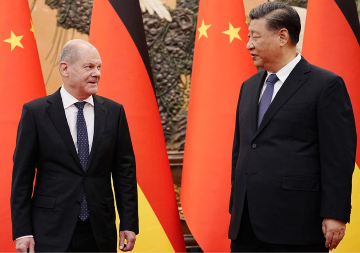The hype surrounding Budget FY17 was unprecedented. Given the unrest in the country—from student agitations in JNU to the Jats—it is only apt that the focus got shifted to the economy, whose revival would not only give a boost to manufacturing and job creation, but also divert the attention of the population from the political milieu to the economic front. Moreover, the Budget was an opportunity for the government to regain some lost ground on the reforms front. But the big question is: Has the Budget delivered on growth and infrastructure development?
Given the focus on Make-in-India, it was imperative for the Budget to address the infrastructure sector’s constraints and pursue reforms with more rigour. Broadly, the key measures announced provide a renewed impetus to the investment cycle and infrastructure sector. However, only time will tell whether these measures would be enough. Six key infrastructure and core industries—electricity, crude oil, petroleum refinery products, coal, steel and cement—have a weight of 26.7% in the IIP. In the Budget, the government has given equal emphasis to all physical infrastructure including roads, rails, ports and aviation, and the allocation stands at Rs 2,21,246 crore. Of this,
Rs 55,000 crore was for roads and highways, and the total allocation for roads, including PMGSY, now stands at
Rs 97,000 crore. The Budget also pointed out that 65 eligible habitats would be connected via 2.23 lakh km of roads—the current construction pace is 100 km per day. The finance minister highlighted the fact that India’s highest ever production of motor vehicles was recorded in 2015. The minister said that new greenfield ports would be developed on east and west coasts. In the aviation sector, an action plan is proposed for revival of unserved and underserved airports in partnership with state governments. Efforts will be made to revive small airports to improve regional connectivity. So, there is required allocation and vision to develop infrastructure sector.
The Budget also allocated Rs 38,500 crore for MGNREGA and Rs 35,984 crore for agriculture, especially irrigation, water conservation, etc. It also allocated Rs 60,000 crore for recharging ground water and
Rs 20,000 crore to NABARD for irrigation. Given the monsoon failure of the last two years, irrigation remains the most crucial infrastructure for the rural economy. Along with physical connectivity through roads and railways, the emphasis on rural infrastructure compliments the overall development strategy.
Infrastructure development has failed to take off in a big way because of the dismal performance of PPP, which was once considered to be a panacea for all infrastructure challenges. PPP projects were scaled up in the last decade, presuming they would transform the infrastructure landscape. But they are beset with problems such as red-tapism, power struggle between agencies including lack of trust between the government and private operators, corruption, land acquisition issues and environmental clearances. The government has introduced the public utility (resolution of disputes) Bill which will issue guidelines for renegotiation of PPP concession agreements. Further, the Budget announced a new credit rating system for infrastructure.
Even the Kelkar committee on revitalising the PPP model of infrastructure said that the success of deploying PPP as an additional policy instrument for creating infrastructure in India will depend on the change in mindsets of all authorities, including public agencies partnering with private sector, government departments supervising PPPs, and auditing and legislative institutions providing oversight of PPPs. The report states that PPPs reflect a paradigm shift. It means moving away from “transaction to relationship”, accommodating “give and take” between private and public sector partners, and finally accepting uncertainties and appropriate adjustments inherent in implementing long-time contracts. Given the market and technological uncertainties, the PPP management will take decisions based on incomplete information.
While the government has rightly focused on infrastructure to put the economy on a high-growth path, there were no big reforms and no major policy turnarounds. It is therefore a modest Budget, with a focus on rural economy, irrigation, agriculture, food processing and infrastructure. However, its success lies in its effective implementation.
The infrastructure sector needs consolidation in policy framework starting from approval to implementation, an institutional mechanism for fair pricing and competition, and developing financial markets along with enhanced budgetary allocation for achieving India’s long-term growth potential.
This commentary originally appeared in The Financial Express.
The views expressed above belong to the author(s). ORF research and analyses now available on Telegram! Click here to access our curated content — blogs, longforms and interviews.




 PREV
PREV


